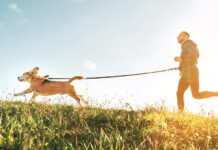Pitbulls are often at the center of heated debates concerning their safety and behavior. Known for their muscular build and powerful jaws, these dogs are frequently portrayed as dangerous and aggressive. However, understanding the facts about pitbulls, their behavior, and the factors influencing their temperament is essential for an informed perspective. This article explores the reality of pitbulls’ dangers, the misconceptions surrounding them, and the factors that contribute to their behavior.
What Is a Pitbull?
The term “pitbull” is commonly used to describe several breeds and breed mixes that share similar physical traits. The primary breeds often classified as pitbulls include:
- American Pit Bull Terrier: Known for their strength and athleticism.
- American Staffordshire Terrier: Often recognized for their friendly demeanor.
- Staffordshire Bull Terrier: Known for their courage and loyalty.
- American Bulldog: Larger and stockier, with a powerful build.
Despite their similarities, each breed has its own unique characteristics and potential behavioral tendencies.
Are Pitbulls Really More Dangerous?
The perception of pitbulls as inherently dangerous is influenced by several factors, including:
- Media Coverage: Pitbulls often receive disproportionate media attention when involved in dog attacks. Sensationalized reporting can skew public perception and contribute to fear.
- Breed-Specific Legislation: Some regions have enacted breed-specific legislation (BSL) targeting pitbulls due to concerns about their aggression. Such laws are controversial and often criticized for their lack of effectiveness in reducing dog attacks.
- Misidentification: The term “pitbull” is frequently applied to dogs that may not fit the precise breed definition. Misidentification can lead to inaccurate assessments of the risk posed by a particular dog.
Understanding Dog Aggression
Dog aggression can stem from various factors, including genetics, environment, and training. Key points to consider include:
- Genetics: While some breeds may have a predisposition toward certain behaviors, aggression is not a breed-specific trait. Many factors, including upbringing and socialization, play significant roles in a dog’s behavior.
- Socialization: Early socialization and positive interactions with people and other animals are crucial for a dog’s development. Dogs that are not properly socialized may exhibit fear or aggression.
- Training and Environment: The behavior of any dog, including pitbulls, can be influenced by their training and environment. Positive reinforcement training and responsible ownership practices contribute to a dog’s well-being and behavior.
- Abuse and Neglect: Dogs that have been abused or neglected may display aggressive behavior as a result of fear and trauma. Addressing these issues often requires professional intervention.
Statistics on Dog Attacks
Data on dog attacks often reveals that breed-specific factors alone do not fully explain aggression:
- Breed Representation: Pitbulls are often overrepresented in attack statistics, but this may be due in part to their popularity and frequency of ownership.
- Attack Severity: Research indicates that while pitbulls may be involved in high-profile attacks, other breeds are also involved in severe incidents. The severity of an attack is influenced by factors such as the dog’s size, strength, and the context of the attack.
Responsible Ownership
The behavior of any dog, including pitbulls, can be managed through responsible ownership:
- Training and Socialization: Invest time in training and socializing your dog from an early age. Positive reinforcement techniques and exposure to various situations help build a well-adjusted pet.
- Supervision: Always supervise interactions between dogs and children or other animals. Proper supervision can prevent accidents and ensure safe interactions.
- Spaying and Neutering: Spaying and neutering can reduce the risk of aggression and other behavioral issues.
- Understanding Your Dog: Learn about your dog’s specific needs, behavior, and body language. Recognize signs of stress or discomfort and address them promptly.
The Role of Advocacy and Education
To address misconceptions about pitbulls and promote responsible dog ownership, several initiatives are crucial:
- Education: Educating the public about dog behavior, breed characteristics, and the factors influencing aggression can help dispel myths and promote informed decisions.
- Support for Responsible Pet Ownership: Organizations and advocacy groups work to promote responsible pet ownership practices, including proper training and socialization.
- Legislation and Policy: Advocating for breed-neutral policies that focus on responsible ownership and dog behavior rather than specific breeds can lead to more effective solutions for preventing dog attacks.
Conclusion
The notion that pitbulls are inherently dangerous is a complex issue influenced by a combination of factors, including media portrayal, breed-specific legislation, and misconceptions about dog behavior. While pitbulls, like all dogs, can exhibit aggressive behavior under certain conditions, understanding the broader context of dog aggression and promoting responsible ownership are essential steps in addressing these concerns. By focusing on education, training, and responsible pet care, we can foster a safer environment for both people and dogs, regardless of breed.










